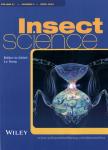Next generation sequencing of Apis mellifera syriaca identifies genes for Varroa resistance and beneficial bee keeping traits
Next generation sequencing of Apis mellifera syriaca identifies genes for Varroa resistance and beneficial bee keeping traits作者机构:Bee Research Department National Center for Agricultural Research and Extension P.O.Box 639-Baqa 19381 jordanian Bee Research Station National Center for Agricultural Research and Extension Irbid Jordan Research and Development Unit Genotypic Technology (P) Ltd. #259 Apurva 2nd Floor 4th Cross R.M. V. 2nd Stage 80 Feet Road Bangalore 560 094 India
出 版 物:《Insect Science》 (昆虫科学(英文版))
年 卷 期:2016年第23卷第4期
页 面:579-590页
核心收录:
学科分类:0710[理学-生物学] 090504[农学-特种经济动物饲养(含:蚕、蜂等)] 0830[工学-环境科学与工程(可授工学、理学、农学学位)] 0905[农学-畜牧学] 09[农学] 0904[农学-植物保护] 0901[农学-作物学] 0713[理学-生态学]
主 题:Apis mellifera syriaca breeding conservation next-generation sequencing(NGS) varroa mite resistance
摘 要:Apis mellifera syriaca exhibits a high degree of tolerance to pests and pathogens including varroa mites. This native honey bee subspecies of Jordan expresses behavioral adaptations to high temperature and dry seasons typical of the region. However, persistent honey bee imports of commercial breeder lines are endangering local honey bee population. This study reports the use of next-generation sequencing (NGS) technology to study the A. m. syriaca genome and to identify genetic factors possibly contributing toward mite resistance and other favorable traits. We obtained a total of 46.2 million raw reads by applying the NGS to sequence A. m. syriaca and used extensive bioinformatics approach to identify several candidate genes for Varroa mite resistance, behavioral and immune responses char- acteristic for these bees. As a part of characterizing the functional regulation of molecular genetic pathway, we have mapped the pathway genes potentially involved using information from Drosophila melanogaster and present possible functional changes implicated in responses to Varroa destructor mite infestation toward this. We performed in-depth functional annotation methods to identify -600 candidates that are relevant, genes involved in pathways such as microbial recognition and phagocytosis, peptidoglycan recognition protein family, Gram negative binding protein family, phagocytosis receptors, serpins, Toll signaling pathway, Imd pathway, Tnf, JAK-STAT and MAPK pathway, heamatopioesis and cellular response pathways, antiviral, RNAi pathway, stress factors, etc. were selected. Finally, we have cataloged function-specific polymorphisms between A. mellifera and A. m. syriaca that could give better understanding of varroa mite resistance mechanisms and assist in breeding. We have identified immune related embryonic development (Cactus, Relish, dorsal, Ank2, baz), Varroa hygiene (NorpA2, Zasp, LanA, gasp, impl3) and Varroa resistance (Pug, pcmt, elk, elf3-s10, Dscam2, Dhc64C, gro,



